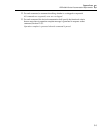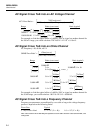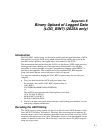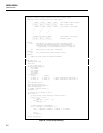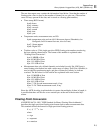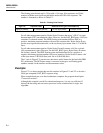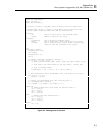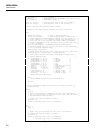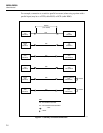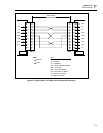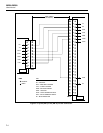
Appendices
Binary Upload of Logged Data (LOG_BIN?) (2625A only)
E
E-3
The raw data output array contains the information listed below. Note that the number of
floating point values is equal to the number of channels in use, plus one. (The totalizer
count is always present in the data, and is stored as a floating point number.)
• Time stamp (BCD format)
byte0: hours
byte1: minutes
byte2: seconds
byte3: month
byte4: date
byte5: year
• Temperature units, measurement rate, and I/O
byte6: temperature units and rate (0x10 bit means degrees Fahrenheit, else
Centigrade; 0x01 bit means fast rate, else slow rate)
byte7: Alarm outputs
byte8: Digital I/O
• Totalizer value as 32-bit single-precision IEEE floating point number stored using
the byte ordering shown below. The format of this number is explained under
"Floating Point Conversion".
byte 9: MMSB of float
byte 10: MLSB of float
byte 11: LMSB of float
byte 12: LLSB of float
• Measurement data; only defined channels are included (exactly like LOG?query);
same floating point format, but with a wider range of values. NaN (Not a Number) is
used to indicate open thermocouple, and plus or minus Inf (infinity) to indicate
overload. The bit values for NaN and Inf are explained in the next section.
byte 13: MMSB of float
byte 14: MLSB of float
byte 15: LMSB of float
byte 16: LLSB of float
bytes 17-20: Second measurement result, if any
bytes 21-24: Third measurement result, if any
..........
Since the ASCII decoding (explained above) creates data multiples of three in length, it
is possible that there will be one or two unused bytes at the end of the decoded byte
stream.
Floating Point Conversion
ANSI/IEEE Std 754-1985, "IEEE Standard for Binary Floating-Point Arithmetic,"
describes the single-precision floating point format used to return measurement data.
This standard defines the format for single-precision floating point as:
X = (-1)
s
2
(e-127)
x 1.m
where
s = sign
e = exponent
m = mantissa



